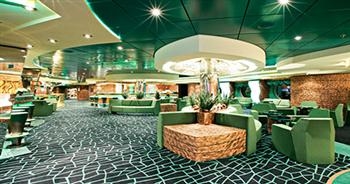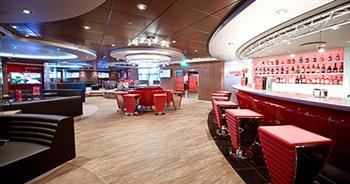Please complete the form below



Santos, one of Portugal’s first New World settlements, was founded in 1535.
Today your MSC ship will be docking in Latin America’s largest port, through which passes a large proportion of the world’s coffee, sugar and oranges.
The city stands partly on São Vicente island, its docking facilities and old town facing landwards, with ships approaching by a narrow, but deep, channel. Its compact centre retains a certain charm that’s massively popular with local tourists, and there is a good deal of historical and maritime interest around the city. On an MSC South America cruise excursion to the city centre you’ll find the ruins of some of Santos’s most distinguished buildings along Rua do Comércio.
Although sometimes only the facades remain, some of the nineteenth-century former merchants’ houses that line the street are gradually being restored, the elaborate tiling and wrought-iron balconies offering a hint of the old town’s lost grandeur. MSC South America cruises also offer excursions to the local Santos Futebol Clube. It’s best known as the club for which the great Pelé
played for most of his professional life (from 1956 to 1974); their stadium, the Vila Belmiro, is open to the public when there’s no game on.
In addition to honouring Pelé at the club’s small museum, you can take an hour-long guided tour including the players’ bar and dressing rooms. Santos’s beaches are across town from Centro on the south side of the island. The beaches are huge, stretching around the Atlantic-facing Baía de Santos, and popular in summer.
On a peninsula north of Cabo Frio, Armação dos Búzios, or just Búzios, is an immensely scenic resort full of high-spending beautiful people, and a very popular port of call on holidays to Brazil with MSC Cruises.
Armação, the main settlement, is built in a vaguely colonial style, its streets lined with restaurants, bars and chic boutiques, and has been nicknamed “Brazil’s St Tropez”. It comes then as little surprise to find that it was “discovered” by none other than Brigitte Bardot, who stumbled upon it while touring the area in 1964.
Búzios consists of three main settlements, Manguinos, Armação and Ossos, each with its own distinct character. Manguinos, on the isthmus, is the main service centre, with a tourist office, a medical centre and banks. Midway along the peninsula, linked to Manguinos by a road lined with brash hotels, is Armação, an attractive village where cars are banned from some of the cobbled roads.
Most of Búzio’s best restaurants and boutiques are concentrated here, along with some of the resort’s nicest pousadas, or inns, and there’s also a helpful tourist office on the main square, Praça Santos Dumont. When you step ashore from your MSC cruise, a fifteen-minute walk along the Orla Bardot – which follows the coast from Armação, passing the lovely seventeenth-century Igreja de NossaSenhora de Sant’Ana on the way –, brings you to Ossos, the oldest settlement, comprising a pretty harbour, a quiet beach and a few bars, restaurants and pousadas.
Within walking distance of all Búzios’ settlements are beautiful white-sand beaches – 27 in total – cradled between rocky cliffs and promontories, and lapped by crystal-clear waters. The beaches are varied, with the north-facing ones having the calmest and warmest seas, while those facing the south and east have the most surf.
As you approach the low-lying, whitewashed colonial port of Vila do Abraão in Ilha Grande with your MSC cruise ship, the mountains rise dramatically from the sea, and in the distance there’s the curiously shaped summit of Bico do Papagaio (“Parrot’s Beak”), which rises to a height of 980m and can be reached in about three hours.
There’s really very little to see in Abraão itself, but it’s a pleasant enough base from which to explore the rest of the island. Ilha Grande comprises 193 square kilometres of mountainous jungle, historic ruins and beautiful beaches, excellent for some scenic tropical rambling. The island is a state park and the authorities have been successful at limiting development and maintaining a ban on motor vehicles.
Ilha Grande offers lots of beautiful excursions along well-maintained and fairly well-signposted trails, but it’s sensible to take some basic precautions. Carry plenty of water with you, and remember to apply sunscreen and insect repellent at regular intervals. According to legend, the pirate Jorge Grego was heading for the Straits of Magellan when his ship was sunk by a British fleet.
He managed to escape with his two daughters to Ilha Grande, where he became a successful farmer and merchant. However, in a fit of rage, he murdered the lover of one of his daughters, and shortly afterwards, a terrible storm destroyed all his farms and houses. From then on, Jorge Grego passed his time roaming the island, distraught, pausing only long enough to bury his treasure before his final demise.
If there is any treasure today, though, it’s the island’s wildlife: parrots, exotic hummingbirds, butterflies and monkeys abound in the thick vegetation.
Santos, one of Portugal’s first New World settlements, was founded in 1535.
Today your MSC ship will be docking in Latin America’s largest port, through which passes a large proportion of the world’s coffee, sugar and oranges.
The city stands partly on São Vicente island, its docking facilities and old town facing landwards, with ships approaching by a narrow, but deep, channel. Its compact centre retains a certain charm that’s massively popular with local tourists, and there is a good deal of historical and maritime interest around the city. On an MSC South America cruise excursion to the city centre you’ll find the ruins of some of Santos’s most distinguished buildings along Rua do Comércio.
Although sometimes only the facades remain, some of the nineteenth-century former merchants’ houses that line the street are gradually being restored, the elaborate tiling and wrought-iron balconies offering a hint of the old town’s lost grandeur. MSC South America cruises also offer excursions to the local Santos Futebol Clube. It’s best known as the club for which the great Pelé
played for most of his professional life (from 1956 to 1974); their stadium, the Vila Belmiro, is open to the public when there’s no game on.
In addition to honouring Pelé at the club’s small museum, you can take an hour-long guided tour including the players’ bar and dressing rooms. Santos’s beaches are across town from Centro on the south side of the island. The beaches are huge, stretching around the Atlantic-facing Baía de Santos, and popular in summer.
Please complete the form below